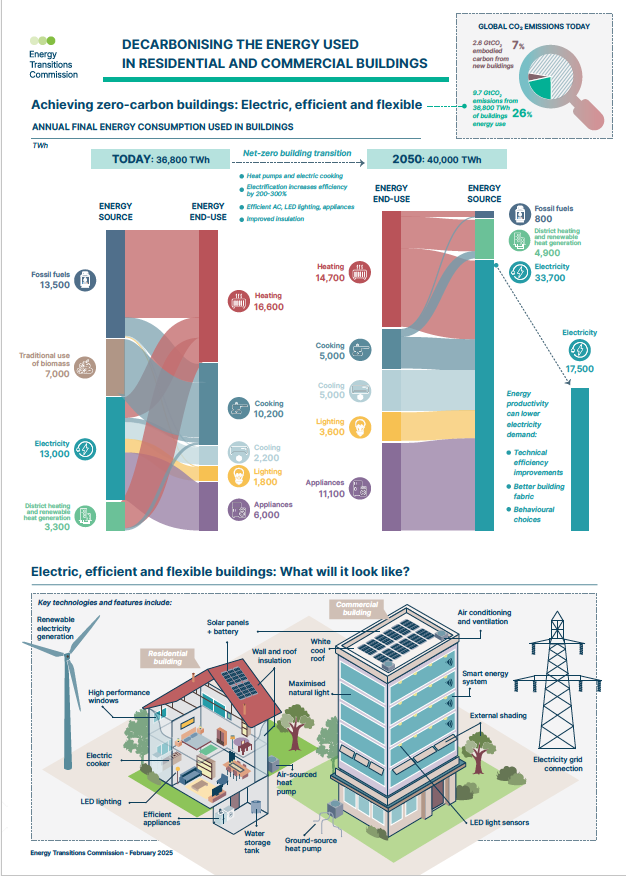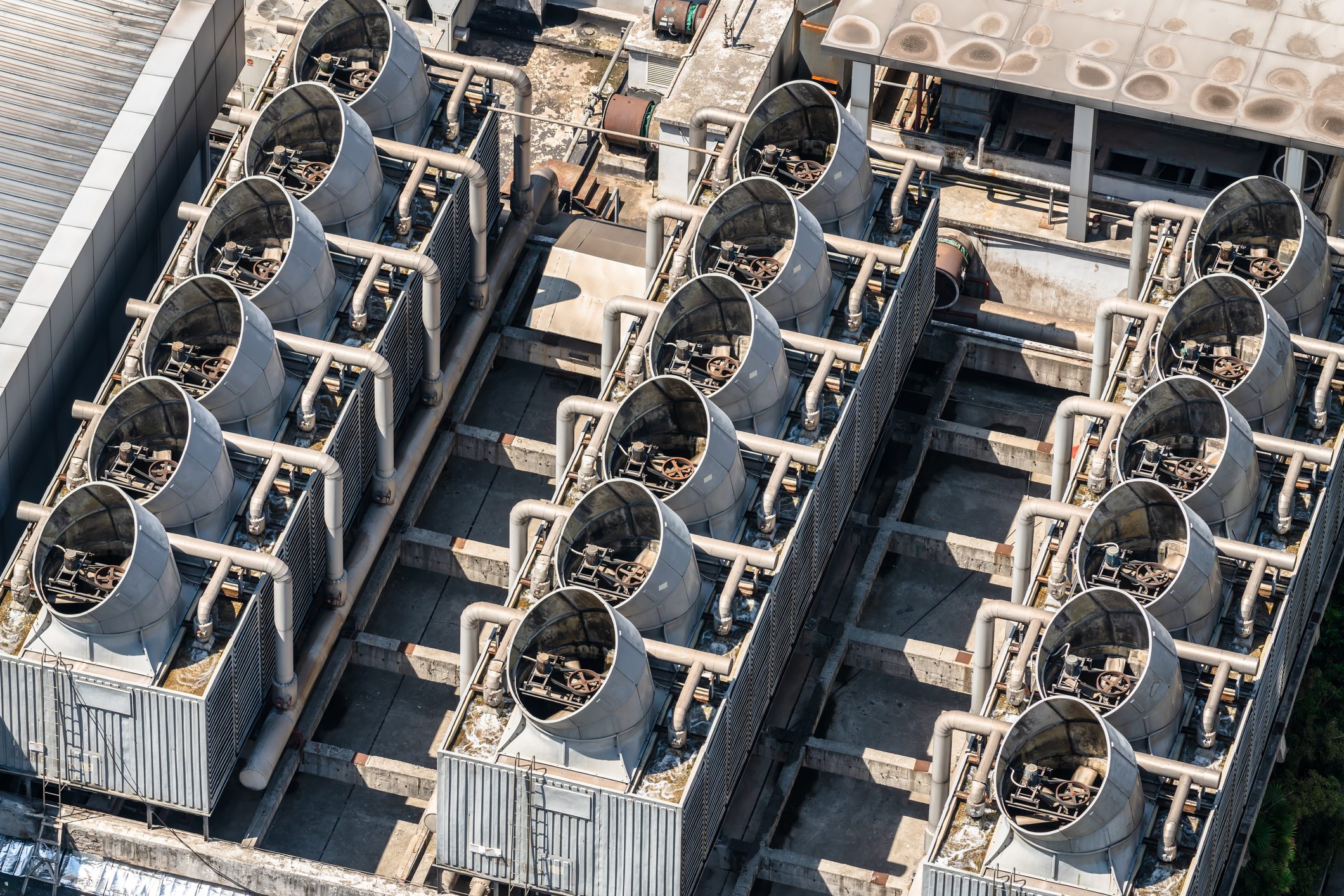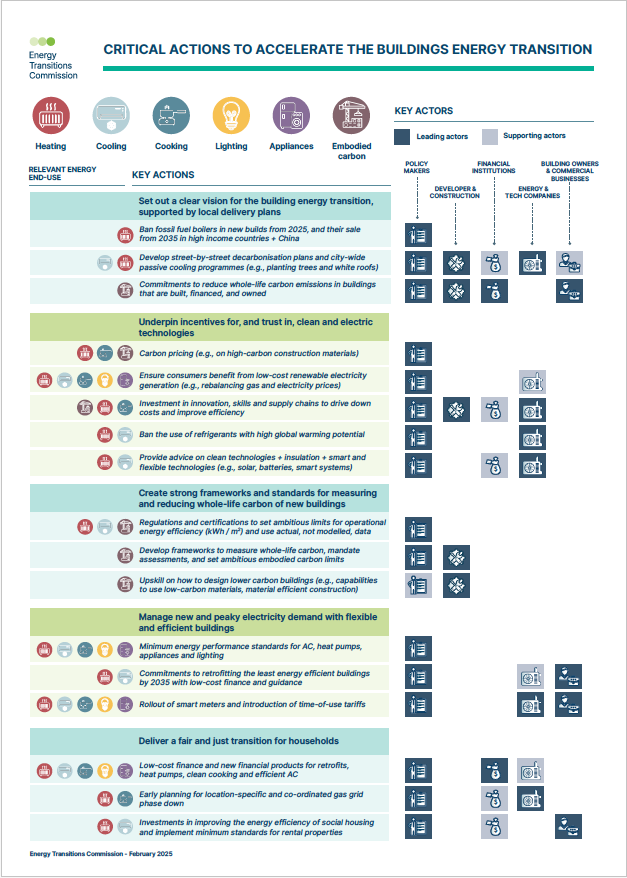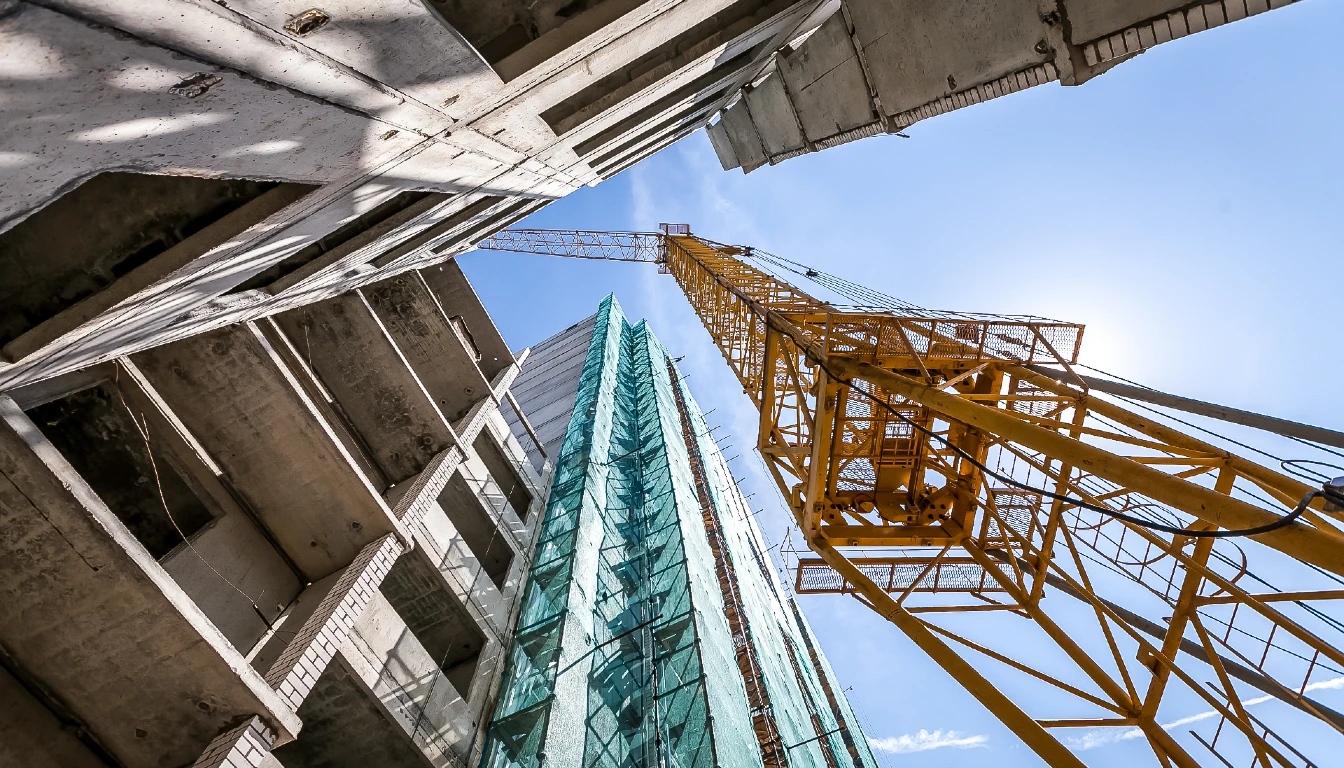The global buildings sector is responsible for a staggering one-third of greenhouse gas emissions, emitting 12.3 gigatonnes (Gt) of CO2 in 2022 alone. From heating and cooling to cooking and construction, buildings are a major contributor to climate change. However, according to a new report from the Energy Transitions Commission (ETC), Achieving Zero-Carbon Buildings: Electric, Efficient, and Flexible, the solutions to decarbonising the sector are already available. The challenge now is scaling them up at speed.
“Decarbonising the buildings sector is a story of many transitions. It is vital for our climate goals and it’s an opportunity to improve living standards and reduce energy costs,” said Lord Adair Turner, Chair of the Energy Transitions Commission.
The Scale of the Problem
Buildings generate emissions from two main sources: the operational energy required for heating, cooling, lighting, and appliances, which accounts for about 75% of the sector’s emissions, and the embodied carbon from construction materials such as steel and cement, which makes up the remaining 25%.
Without intervention, global floor area is expected to expand by 55% by 2050, leading to an additional 75 Gt of CO2 emissions. If business as usual continues, this alone could consume a significant portion of the world’s remaining carbon budget to stay within the 1.5°C warming target set by the Paris Agreement.
Pathways to Decarbonisation
Despite the scale of the challenge, the ETC report lays out a clear path to net-zero emissions through electrification, energy efficiency, and low-carbon construction.
Electrification is set to replace fossil fuels in buildings, a critical shift given that gas and oil heating alone account for 8% of global emissions (3 Gt CO2). Technologies such as heat pumps and electric induction stoves provide a viable alternative. The report estimates that by 2050, 80% of all building energy use could come from electricity, meaning emissions from building operations could fall to near zero if electricity generation is also fully decarbonised.
Turner emphasised the multiple benefits of this shift, stating that electric heating and cooking technologies will not only reduce emissions but also improve air quality and lower running costs compared to traditional gas heating and biomass use. However, he cautioned that policymakers must ensure a fair transition, as electric heating systems often have high upfront costs.
Governments need to implement clear bans on fossil fuel boilers and provide financial support for low-income households to make the switch.

The decarbonisation opportunity. Graphics from the ETC report.
Energy efficiency is another key pillar of decarbonisation. Without improvements, electricity demand for buildings could more than triple by 2050. However, through smart design and technology, this increase could be cut in half. Upgrading heat pumps, air conditioners, and appliances to more efficient models can significantly reduce energy consumption. Passive building design techniques, such as better insulation, shading, and reflective roofing materials, help to cut the need for heating and cooling. Smart building management systems, including battery storage in the buildings, can further optimise energy use, ensuring that energy waste is minimised. These combined measures could cap electricity demand at 18,500 terawatt-hours (TWh) in 2050, compared to an unmitigated projection of 35,000 TWh.

Ensuring efficient air conditioning will be crucial to reducing carbon emissions.
Constructing low-carbon buildings will be essential in addressing the emissions stemming from construction materials. The production of steel and cement is among the most carbon-intensive industrial processes. If left unchecked, construction alone could add another 75 Gt of CO2 emissions by mid-century.
However, the ETC report highlights the potential to reduce this figure to around 30 Gt through innovations in material production and usage. The use of green steel, alternative cement chemistries, and electrified construction processes can significantly lower embodied carbon. Additionally, modular construction and better urban planning can reduce the need for new builds, while materials such as timber, bamboo, and other bio-based options provide an alternative to conventional, high-emission materials.
Stephen Hill, Sustainability and Building Performance Expert at Arup, stressed that decarbonisation must be addressed holistically, from material choices to heating and cooling systems. “Unless we can radically decarbonise buildings, we will fail to keep global warming under 1.5°C,” he said.
A Market Opportunity
The transition to zero-carbon buildings is not just an environmental necessity—it is also a major commercial opportunity. The demand for green buildings is rising as businesses and homeowners look to reduce energy costs and align with increasingly stringent regulations. The global market for energy-efficient buildings and retrofits is expected to grow rapidly, with financial incentives driving further investment. Companies involved in the production of sustainable building materials, energy-efficient appliances, and smart grid solutions stand to benefit significantly. Financial institutions are also stepping in, with green financing options becoming more available for property owners looking to invest in upgrades.
According to Cristina Gamboa, CEO of the World Green Building Council, the shift to zero-carbon buildings presents a major economic opportunity that extends beyond the construction industry. “WorldGBC mobilises a global network towards the just transition of the built environment for people and planet. We are proud to support this ETC report. It is a timely reminder of the connection between buildings and the energy system. The two are intrinsically linked – we cannot decarbonise one without the other.”
A Sector Poised for Transformation
While the decarbonisation of buildings presents challenges, the solutions outlined in the report demonstrate that a transition is feasible with the right policies and investments. Governments, businesses, and financial institutions must collaborate to scale up the deployment of clean technologies and ensure that building decarbonisation becomes a standard practice rather than an exception. The shift to electric, efficient, and flexible buildings will not only help mitigate climate change but will also create new economic opportunities and improve living standards.
The future of the buildings sector is one of transformation, and the direction it takes will play a decisive role in global climate efforts.





